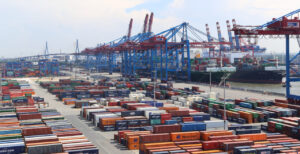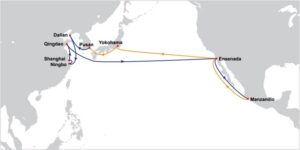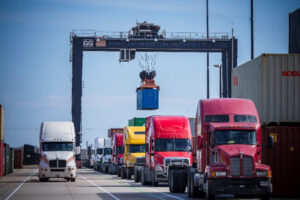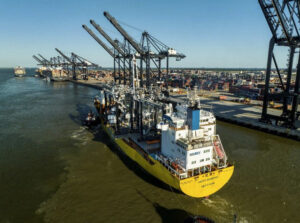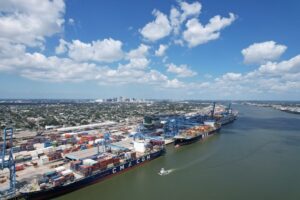Normal cargo throughput patterns are not set to return until 2022 as record volume at US cargo ports has led to a much stronger financial performance than pandemic expectations, Fitch Ratings said in a recent update.
However, maintaining operational efficiency is more challenging as bottlenecks increase due to pressured supply chains, mismatched rolling stock, capacity-strained logistics networks and COVID-19 shutdowns at Chinese ports.
Ports will continue to see congestion pressures well into the upcoming peak shipping season, with throughput patterns not expected to normalise until the beginning of 2022, Fitch Ratings has said.
West Coast ports have seen exceptionally high volumes through the pandemic, driven by robust goods consumption.
LA and Long Beach
The Port of Long Beach’s total fiscal 2021 year to date (YTD) through June have grown 33% over the same nine-month period a year prior.
POLB saw a dip in its June 2021 throughput as a result of the shutdown of Yantian, one of China’s key export hubs, in May. Yantian recently resumed full operations, but the ripple effects will also be seen at other ports in summer throughput as it will take time to unwind the resulting cargo backup.
Port of Los Angeles’ YTD TEUs through May were up 48.2% versus the same period in 2020. Fitch-tracked West Coast port TEUs were up 37% through May 2021 from the same period in 2020, and up 17% from the same period in 2019. Port volumes generally track GDP, and Fitch expects 2021 US and China GDP growth of 6.8% and 8.4%, respectively.
Both POLA’s and POLB’s ability to handle larger ships, sizable local market shares and strong representation across shipping alliances continue to position them favourably amid shipping volatility.
Increasing imports
Volumes have heavily favoured imports, generating challenges for US agricultural exports as shippers prefer to send empty containers to China rather than waiting for export loads, which are constrained by higher shipping costs.
US lawmakers are drafting legislation to force ocean carriers to accept exports.
Although the San Pedro Bay Port Complex has more overall capacity than any other US port with faster routes to Asia, congestion has led some ships to be rerouted, benefiting ports such as Oakland as shippers add additional direct services.
Some East Coast and Gulf Coast ports have also seen large increases in container volumes, with the Port of Savannah (GA) growing the fastest (up 31% through May 2021 versus 2020, and up 21% as compared with 2019).
East Coast port TEUs were up 23% through May 2021 versus the same period in 2020, and up 16% from the same period in 2019. Cargo volume increases at these ports are constrained by capacity limitations, Panama Canal ship size restrictions and comparatively more congested inland transportation networks.
Congestion to continue
Congestion is expected to persist through year-ed 2021 and possibly into 2022, with peak shipping season beginning at the end of the summer with back-to-school and office shopping and continuing through the holiday season.
Volume growth will ebb as supply catches up with demand toward YE 2021 and will likely continue at lower rates into 2022.
Outbreaks of coronavirus variants that lead to revived restrictions and further shutdowns along the supply chain may further affect volumes. Margins could be pressured if congestion persists well into 2022 with decreases in yard efficiency and increases in labour costs.


